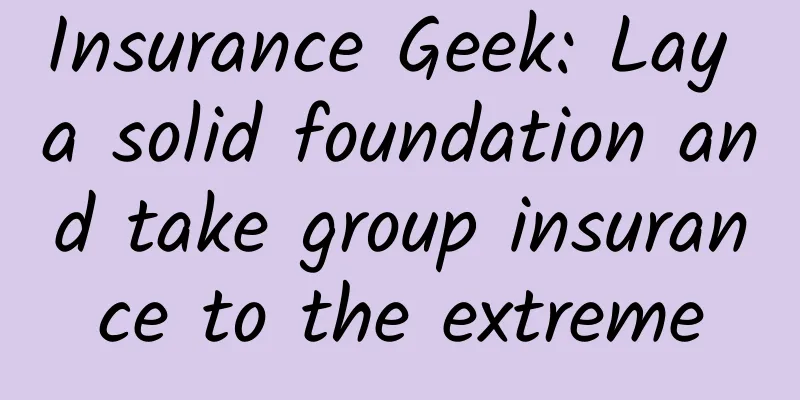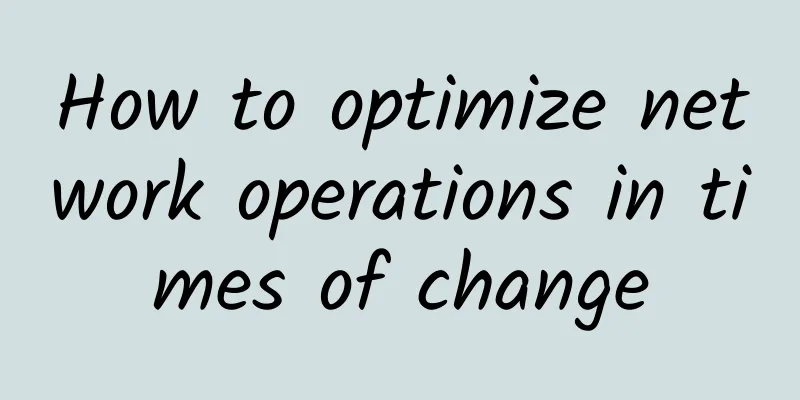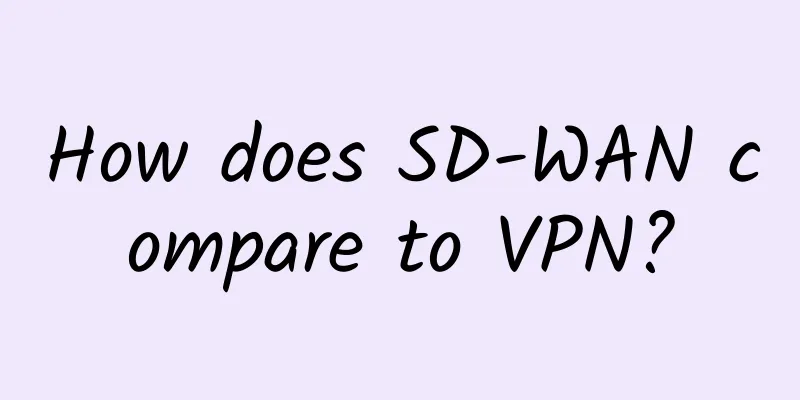Insurance Geek: Lay a solid foundation and take group insurance to the extreme

|
[51CTO.com original article] As a worker, have "five insurances and one housing fund" become the basic conditions for you to find a job? If a company provides you with "six insurances and one housing fund", will you have a better impression of this company? This extra "one insurance" is often the group insurance that the company purchases for its employees. The so-called group insurance is actually a kind of commercial insurance. It is a group insurance, which is insured in the name of the group and the insurer issues a general insurance contract. Group insurance can often be insured with illness, can cover pre-existing conditions, and has a wider coverage. Some can also be purchased for family members. Therefore, it is favored by the majority of workers. In the US insurance market, group insurance accounts for a very high proportion and plays an important role in employee benefit plans. Authoritative data show that as of 2020, about 156 million Americans are covered by group health insurance, accounting for about 49% of the total population. In China, corporate group insurance, as an employee benefit, has become a glue between companies and employees, enhancing corporate competitiveness. At the same time, promoting the development of group insurance can also effectively improve the level of national security in my country and play an important role in the multi-level medical security system. Under the pressure of accelerated population aging and medical inflation, corporate group insurance, which focuses on supplementary medical care, can make full use of resources from the government, society, the market and other parties to achieve sustainable development of the medical security system. Therefore, the corporate group insurance market is ushering in new development opportunities. The opportunity is there, but what are the difficulties? This starts with the characteristics of group insurance. In the field of enterprise service software, compared with OA, CRM, and ERP, group insurance business is much more complicated, because each insurance product and each corporate customer requires different contract terms, which will directly affect the premium, underwriting, and even the claim of each order. For example, the claims plan corresponding to which hospital to go to and what kind of disease to see is not the same. This fine-grained product has to support thousands of companies at the same time, and each company has hundreds or even tens of thousands of people, so the complexity of group insurance business is growing exponentially. At the same time, China has a large population and a large regional difference in social security. Therefore, the group insurance system must not only take into account the differences between companies and personnel, but also the differences in medical insurance policies in different regions and the differences in product terms of different insurance companies. It can be said that the complexity of group insurance is very large. On the other hand, unlike other insurances, group insurance serves the B-end on one side and the C-end on the other side. This requires group insurance to be able to deeply analyze the needs of enterprises on the B-end, tailor protection plans according to the characteristics of the enterprises, and find a balance between employee welfare expenditures and efficiency returns. On the C-end, it can provide different protection services for employees and their families based on potential risk points, dig deep, and provide effective coverage. Four-layer architecture lays a solid foundation for digital group insurance Since its establishment in 2014, Insurance Geek has been focusing on providing group employee welfare insurance and health management solutions. In 2015, Insurance Geek launched the first complete group insurance SaaS system in China, moving group insurance business from offline to online; in 2016, it took the lead in launching mobile claims services; in 2017, it released the overall solution for corporate employee welfare insurance "Geek+"; in 2018, "Geek+" 3.0 was released, and services such as corporate health reports and employee health management were launched; in 2020, medical and health management services were upgraded, and Internet hospitals, video instant consultations, expert telephone consultations and other services were launched, opening up the underlying systems of medical and health institutions. At present, Insurance Geek has penetrated the complete corporate group insurance service chain from front-end sales to mid- and back-end services, risk control, underwriting, and claims. "What Insurance Geeks do is more like laying the foundation for digital group insurance. The underlying core system, on the one hand, is connected with insurance companies in terms of data; on the other hand, it is connected with the health system, so that the needs of corporate employees in medical care and health management can be met." said Ye Hui, CTO of Insurance Geeks. The overall technical architecture of Insurance Geek is a complete set of underlying core systems, which covers product design and risk control, as well as claims and service systems. It provides a complete set of solutions for precision marketing and customer relationship management. Through the BI and middle platform engines, better welfare operation monitoring and health management can be achieved. Based on the complex underlying core, it is the innovative group insurance solution of "Geek+", which serves the business on both the B and C ends. For the B end, it helps the HR of B-end enterprises customize solutions that meet the needs of the enterprise and understand the health status of the enterprise employees. On the C end, it meets the individual's self-selected upgrades and comprehensive family protection, including parents, spouses and children. On the C end, you can also complete the claims on the WeChat mobile terminal and enjoy online medical and health management services. The four-layer architecture of the technical system, the bottom-level business and data center is the foundation of the business system, including metadata/data center, user/authority center, process center, application center, event center, etc. In the business layer, there are customer management, sales management, product management and other modules, which are built on the bottom-level data center business module and are also the core business system. The third layer is the SaaS layer, which mainly faces corporate HR, completes corporate HR and corporate finance related functions, completes corresponding actions such as insurance in this system, and can also see the company's health report and deeply understand the health status of employees. The top layer is the user layer, where C-end users can complete the "Geek+" upgrade and family protection. At the same time, you can initiate claims and enjoy medical and health services. Resolving business complexity with metadata It is precisely because of the complexity of group insurance business that there are many special situations that need to be dealt with during the underwriting and claims settlement process. Large companies may have dozens or hundreds of demands that need to be developed separately, which makes it difficult for the R&D team to cope. If you abstract the complex business system and model the data, the complexity will be greatly reduced. The Insurance Geek system contains about 10,000 insurance products. It is difficult to write a system to perfectly handle all their relationships. Insurance Geek has made a deeper level of abstraction on this basis, abstracting the corresponding metadata of these business models, making a complete description of the business at the metadata level, and building data centers and business applications on top of the metadata, with flexibility and customization capabilities. Ye Hui emphasized that metadata is the cornerstone of the overall architecture of Insurance Geek. Metadata describes business entities based on the existing business layer of Insurance Geek, including all insurance products, configurations, rules of the rule center, and processes of the process center. The definition of metadata attributes, the positioning of complex associations, and the verification rules based on these attributes and associations are all within the scope of metadata description. As a technical platform, Insurance Geek believes that rules are the most core capability in the entire business system, including risk control rules, verification rules, etc. In group insurance, each enterprise can put forward some personalized requirements, such as automatic settlement, insurance and rate calculation, etc. These can be implemented using the rule engine. The definition of the rules themselves is based on cloud data, which allows all businesses to define corresponding rules and run on this rule engine. For example, the claims process is different for different companies and different people in different companies. When requesting a quote, the approval process may also be different. This is all driven by a process engine based on metadata. In other words, the same process engine meets all business needs. Conclusion Flexible technical solutions are the foundation for supporting the insurance geek group insurance business. The technical system of Insurance Geek uses metadata and data centers as the "meta-power" to ensure the smoothness, speed and efficiency of the system. From the configuration of insurance products, to the formulation of customer protection plans, to the connection with insurance companies, to the settlement of claims cases, each business link is built under a set of scalable and adjustable rule systems, driven by rules, and flexible enough to expand new processes according to business and meet more needs. In the future, Insurance Geek will continue to promote the implementation of insurance protection systems and health management scenarios, establish an open system, and use the accumulated capabilities to cooperate with channels, platforms, insurance companies, and health management agencies to use technological means to explore the in-depth application of digital group insurance and empower the development of the industry. [51CTO original article, please indicate the original author and source as 51CTO.com when reprinting on partner sites] |
<<: China Telecom develops 5G slicing technology to help the industry's digital transformation
>>: How can operators tap into the 5G dividend when they have over 600 million 5G users?
Recommend
Single-mode fiber: What's next?
As the demand for high-speed, reliable networks c...
RAKsmart bare metal cloud/cloud server 30% off, physical server flash sale starting from $30/month, cluster server/high bandwidth server special price
This month, RAKsmart's new bare metal cloud p...
If you don’t know NAT, you can’t be a good network engineer
[[436174]] 1. Network Address Translation Technol...
China Mobile's TD-SCDMA network withdrawal begins: Fujian has taken the lead
[[259267]] Recently, the Fuzhou Radio Management ...
WOT Boco Nie Xiaoyun: WLAN network capacity performance design and optimization
[51CTO.com original article] Just last week, the ...
What hurdles do 5G mobile phones need to overcome before they can be launched on the market?
Recently, more and more mobile phone manufacturer...
Cisco's Wei Songbin: Cisco makes people's work and life smarter, simpler, safer and more convenient
[51CTO.com original article] Reporters have atten...
H3C: The key to computing-network integration lies in the efficient coordination of computing power and transportation capacity
On September 26, the "2022 China Cloud Netwo...
drServer: Dallas unlimited dedicated servers starting at $12/month
drServer is a foreign hosting company founded in ...
Wu Hequan analyzes the misunderstandings of 5G application in industrial Internet: a new 5G2B architecture needs to be developed
At the summit forum of the "Fifth Future Net...
This article will help you understand the difference between fog computing and edge computing!
1. What is the difference between fog computing a...
Is IPv6 the future trend? What are the technical barriers to deploying IPv6?
Nobody's using IPv6? I'm sure there are m...
Spain's 5G state subsidies may exclude Huawei, Huawei appeals
On October 10th, local time on Monday, Huawei app...
Security Talk丨How far are we from 5G?
[[267324]] Security officials from governments ar...









